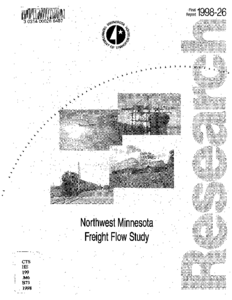Displaying results 1 - 4 of 4
Sinusoidal Rumble Strip Design Optimization Study
Date Created
2016
Report Number
2016-23
Description
Minnesota Freight Flows - 1990
Date Created
1995-02
Report Number
95-14
Description




